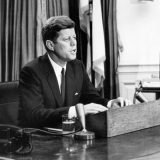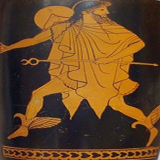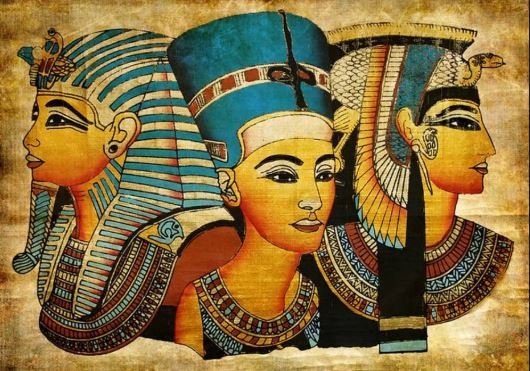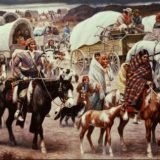Austrian Composer Joseph Haydn
Joseph Haydn was an Austrian composer of the Classical period, known as the “Father of the Symphony” and “Father of the String Quartet” for his significant contributions to musical form and structure.
Early Life and Education
Joseph Haydn was born on March 31, 1732, in Rohrau, Austria, a small village near the Hungarian border. His father, Mathias Haydn, was a wheelwright and amateur harpist, while his mother, Maria, had been a cook for a noble family. Despite their lack of formal musical training, the Haydn household was deeply musical, and young Joseph displayed exceptional talent from an early age.
Recognizing his potential, a relative, Johann Matthias Frankh, took Haydn to Hainburg at the age of six to receive musical training. Although his time there was difficult due to poor living conditions, he quickly developed his skills on the harpsichord and violin. In 1740, Haydn joined the choir of St. Stephen’s Cathedral in Vienna, where he received further musical education and exposure to the works of leading composers. However, by 1749, as his voice changed, he was dismissed from the choir, forcing him to fend for himself as a struggling musician in Vienna.

Joseph Haydn, as portrayed by Ludwig Guttenbrunn
Struggles as a Freelance Musician
Following his dismissal, Haydn took on various small jobs, including teaching music, playing in street ensembles, and serving as an accompanist. He also studied composition independently, working through Johann Joseph Fux’s Gradus ad Parnassum and studying the works of Carl Philipp Emanuel Bach. During this period, he gained valuable experience under composer Nicola Porpora, from whom he learned advanced techniques in composition and vocal writing.
Despite financial difficulties, Haydn’s reputation grew. His first notable success came with his opera Der krumme Teufel, written in 1753 for comedian Joseph Felix von Kurz. Though the opera was soon banned, it introduced Haydn to the Viennese musical scene. He soon gained aristocratic patronage, working for Baron Carl Josef Fürnberg and later Count Morzin, both of whom commissioned compositions from him.
Kapellmeister for the Esterházy Family
In 1761, Haydn secured a prestigious position as Vice-Kapellmeister for Prince Paul Anton Esterházy, a wealthy nobleman with a strong interest in music. After the death of Gregor Werner in 1766, Haydn was promoted to full Kapellmeister, responsible for composing, conducting, and overseeing the court musicians. His primary residence was at Eszterháza Palace, an opulent estate where he had access to a full orchestra and an opera house.
Haydn served as Kapellmeister (music director) for the Esterházy family for nearly 30 years, composing, conducting, and overseeing musical performances at their court.
During his nearly 30 years with the Esterházy family, Haydn composed an enormous body of work, including symphonies, string quartets, operas, and sacred music. His isolation at Eszterháza led him to develop a highly original style, earning him the titles “Father of the Symphony” and “Father of the String Quartet.” His Paris Symphonies (1785–1786) and The Seven Last Words of Christ (1786) exemplified his growing international recognition.

Haydn, portrayed by English painter Thomas Hardy.
Friendship with Mozart and Influence on Beethoven
By the 1780s, Haydn had developed a close friendship with Wolfgang Amadeus Mozart, whom he greatly admired. They played chamber music together, and Haydn’s influence is evident in Mozart’s later quartets, known as the “Haydn Quartets.” In 1785, Haydn was initiated into the same Masonic lodge as Mozart, further strengthening their bond.
Haydn also played a significant role in the early career of Ludwig van Beethoven. The young composer studied under Haydn in Vienna from 1792 to 1794. While their relationship was sometimes strained due to differences in temperament, Haydn’s teachings left a lasting impact on Beethoven’s compositional style.
London Journeys and International Fame
In 1790, following the death of Prince Nikolaus Esterházy, Haydn was relieved of many court responsibilities. This allowed him to accept an invitation from impresario Johann Peter Salomon to visit London. His first London trip (1791–1792) was a resounding success, as audiences were captivated by his performances and new compositions, including the Surprise Symphony. He was awarded an honorary doctorate from Oxford University and was celebrated as Europe’s leading composer.
A second London visit in 1794–1795 was equally triumphant. Haydn composed his final twelve symphonies, known as the London Symphonies, which remain among his greatest orchestral works. He also formed a romantic relationship with Rebecca Schroeter and gained financial security through generous patronage and concert earnings.
Later Years and Masterpieces
After returning to Vienna in 1795, Haydn resumed his duties for the Esterházy family but at a reduced level of involvement. He focused on composing large-scale choral works, producing two masterpieces: The Creation (1798) and The Seasons (1801). These oratorios, inspired by his experiences in England, showcased his mature style and established him as a master of vocal and instrumental writing.
Joseph Hadyn was known for his humor, modesty, and strong work ethic. A devout Catholic, he often inscribed his compositions with “Laus Deo” (Praise be to God).
Haydn’s final years were marked by declining health, but he remained a revered public figure in Vienna. His last major composition was the Harmoniemesse (1802). Though he attempted to compose further works, his physical condition prevented him from completing them. His final public appearance occurred in 1808 at a performance of The Creation, where he was honored by the audience, including Beethoven and other admirers.
Death and Legacy
On May 31, 1809, Haydn passed away at the age of 77. His death occurred during Napoleon’s occupation of Vienna, and the French army even paid tribute to the composer. His remains were initially buried in Vienna but later moved to Eisenstadt, where he was finally laid to rest in 1820.
Haydn’s contributions to classical music are immeasurable. He developed and refined the symphony, string quartet, and sonata forms, influencing composers such as Mozart, Beethoven, and Schubert. His music, characterized by wit, innovation, and masterful craftsmanship, remains an essential part of the classical repertoire. His Emperor’s Hymn, composed in 1797, later became the melody for the German national anthem.
Haydn’s legacy endures through his vast body of work, his pioneering contributions to musical form, and his role in shaping the Classical period. His influence can still be felt in orchestral and chamber music, and his compositions continue to be performed worldwide, securing his place as one of the greatest composers in history.
Frequently Asked Questions about Joseph Hadyn

Portrait of Joseph Haydn. Artwork by Christian Ludwig Seehas.
How did Haydn start his musical career?
Born into a humble family, he was sent to Vienna at a young age to be a chorister at St. Stephen’s Cathedral. After being dismissed, he struggled as a freelance musician before gaining employment with noble patrons.
How did Haydn influence other composers?
He was a close friend and mentor to Mozart and taught Beethoven, significantly shaping their musical development.
Why did Haydn travel to London?
After the death of his patron, Haydn accepted an invitation to England, where he conducted new symphonies and gained international fame, composing his celebrated “London Symphonies.”

John Hoppner ‘s portrayal of Haydn.
What are some of Haydn’s most famous works?
His notable works include the oratorios The Creation and The Seasons, Emperor’s Hymn (later Germany’s national anthem), and numerous symphonies, quartets, and sonatas.
What happened to Haydn in his later years?
Declining health prevented him from composing after 1803. He spent his final years in Vienna, where he was honored but suffered from illness until his death in 1809.
























